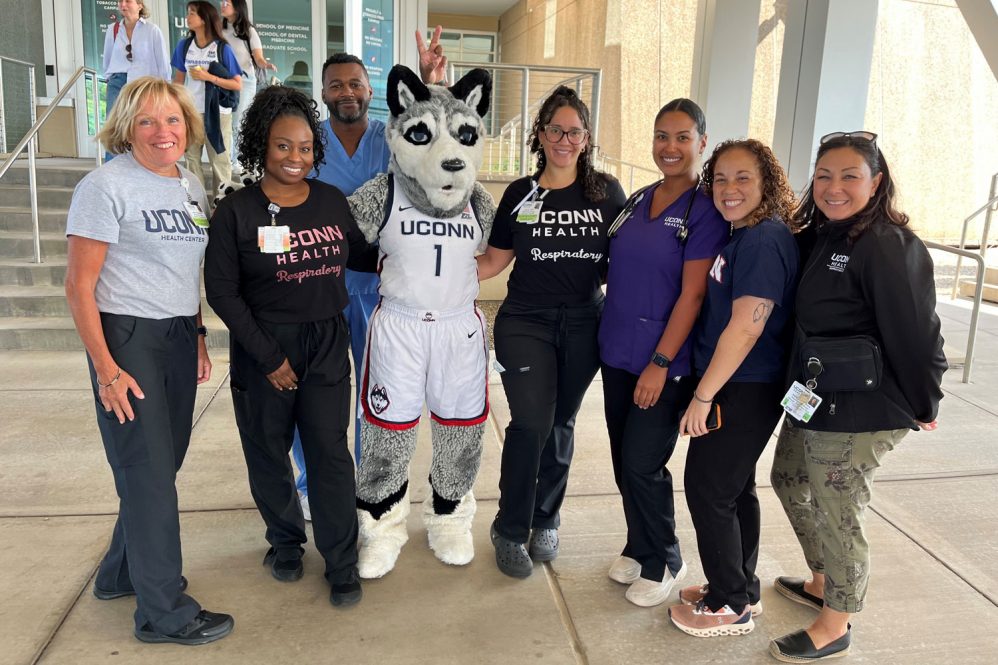For Respiratory Care Week, medical student offers first-hand account of working with lead RT

UConn mascot Jonathan stops for a pose at UConn Heatlh's academic building with (from left) Janet Annesi, Natasha Thomas, Randy Luke, Lisa Gilbert, Stephanie Guiterrez, Stephanie Rodriguez, and manager Sandy Thibodeau. All are among UConn Health's 33 respiratory therapists except Luke, who works with them as a supply coordinator. (Photo provided by Sandy Thibodeau)
This week UConn Health celebrates its 33 respiratory therapists for their vital contribution to patient care.
In the spirit of Respiratory Care Week, Oct. 20-26, here's a first-hand account of a second-year medical student's experience shadowing lead respiratory therapist Sherael Stephenson.
Shadowing an RT today was a really informative experience. One of the first things I noticed was how involved RTs are across the whole hospital. We went to the ED, to med surg, to ICU floors, and there were always a handful of patients who required respiratory therapy.
I also noticed how skilled a respiratory therapist must be to do different procedures like suctioning, tracheal interventions, ventilation equipment, oxygen machines, etc. Not only do they have to know how to operate all these machines and devices, but they also have to have a really deep understanding of respiratory physiology.
I was really impressed by the RT today talking about arterial blood gas levels, vital signs and their specific meanings, breathing patterns etc. She was very interactive with different members of the health care team including the CNAs, nurses and physicians/providers. I watched the RTs communicate their interventions and findings with the patient-assigned nurses as well as making recommendations to physicians.
The RT today also shared her story about how COVID heavily impacted the field, and how emotionally draining it was to work during the pandemic. I felt so much appreciation for her and the amount of lives she saved during such a tragic time.
I did not get a chance to witness any suctioning on the floor today but I can imagine it can be really helpful for a patient who has increased secretions. While the procedure itself may be uncomfortable, the outcome of increased oxygen saturations and easier breathing is probably much appreciated by the patient.






